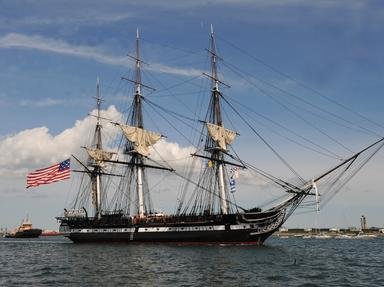Quiz Answer Key and Fun Facts
1. Explorer Henry Hudson claimed territory in the New World for which European country?
2. What was Hudson looking for in the New World?
3. The explorer Samuel de Champlain claimed Canada and founded the trading outpost of Quebec for France.
4. Whom did the Indian Princess Pocahontas marry?
5. Captain John Smith was forced to return to England. Why?
6. Pocahontas visited England but was stricken by fever and died and she is buried in England.
7. The year 1619 is refered to as a "Red Letter Year" in the Jamestown colony. Why?
8. In 1620, 102 English Pilgrims arrived at the New World and founded a colony. Where - according to tradition - did they land?
9. While on board the ship the Pilgrims signed a document. What was it called?
10. In 1626 the Dutch sent settlers to the New World to establish a colony. What was the name of their outpost on the Atlantic coast?
11. In 1630 the Massachusetts Bay Company founded the town of Boston. In the next fifteen years 20,000 settlers moved to the area. What was the name given to this influx of settlers?
12. The Swedes, not to be left out of the New World migration, founded their own colony on the Atlantic coast.
13. Under a land grant from the king to the Calvert family, Lord Baltimore founded a colony at St. Mary's, Maryland. What was unique about this colony?
14. Anne Hutchinson and her followers were expelled from the Massachusetts colony because of their religious beliefs and were forced to return to England.
15. The colony of Maryland was noted as a refuge for Catholics.
16. In 1655 the Dutch under leadership of Peter Stuyvesant took control of the Swedish settlement along the Delaware River.
17. In 1664 the English annexed the Dutch colony of New Amsterdam thus giving them control of the Atlantic Coast from Carolina to Massachusetts. What was the new name given to New Amsterdam?
18. What was the name of the oldest locally elected governing body in the English colonies?
19. What was the name of and where was the first college in the British colonies?
20. Between the years 1610-1754 what country was pushing its influence across Canada and the Great Lakes?
21. King Philip's War was an attempt by the British to stifle the spread of French influence in North America.
22. What was the cause of Bacon's Rebellion in the Virginia Colony?
23. In 1681 King Charles II granted a Royal Charter to the Quaker, William Penn. Which colony did he establish?
24. In 1689 the British and French went to war in a series of wars that lasted off and on for the next 75 years.
25. Why did most Native American tribes have better relations with the French rather than the British?
Source: Author
Ironsides 163
This quiz was reviewed by FunTrivia editor
bloomsby before going online.
Any errors found in FunTrivia content are routinely corrected through our feedback system.

